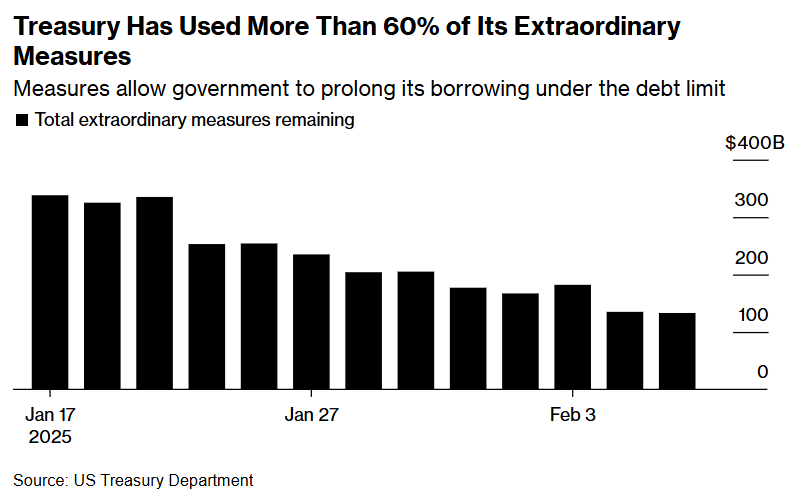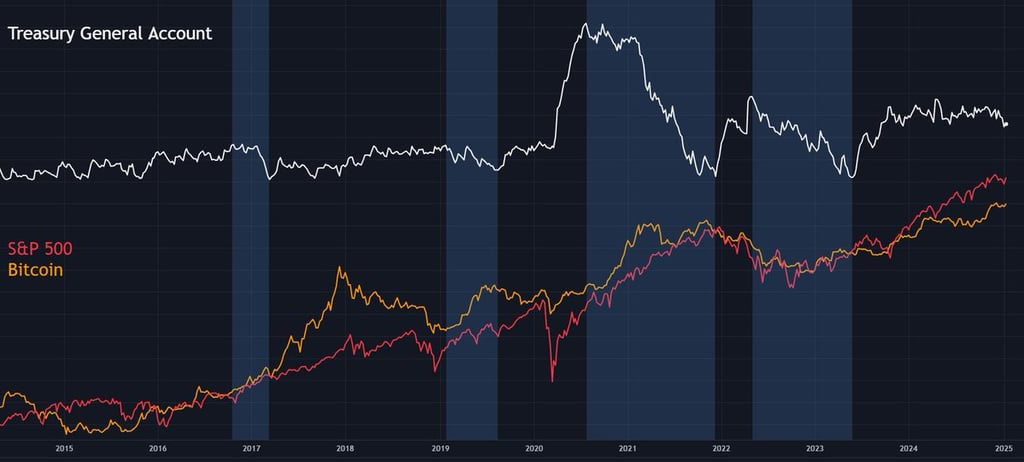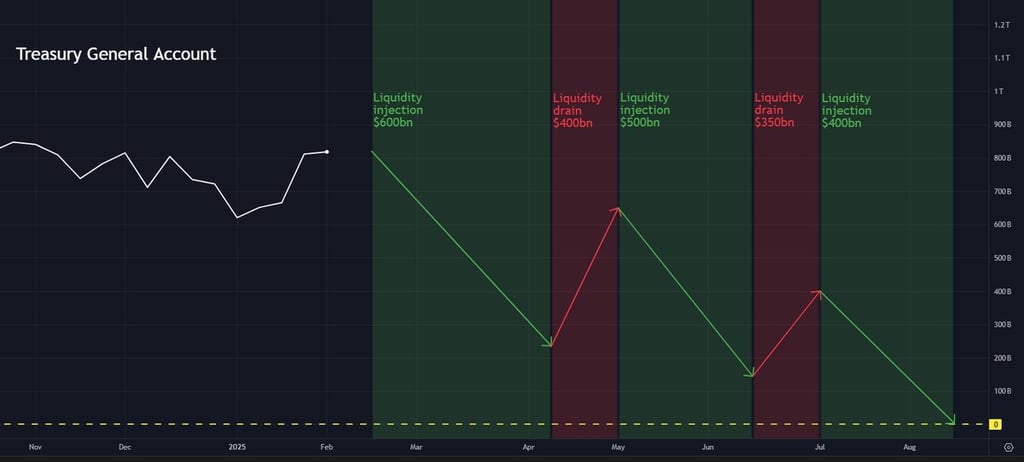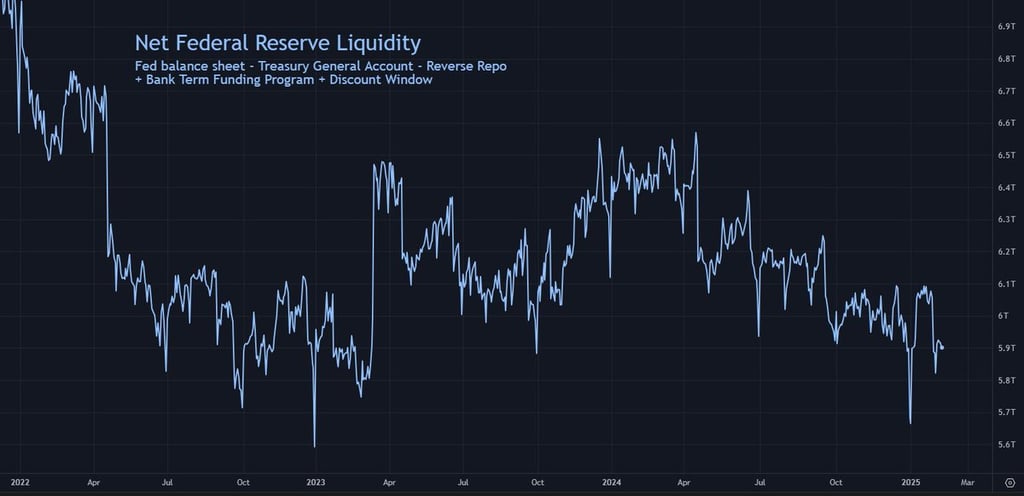TGA Liquidity Analysis: Impact on Stock & Crypto Markets
TGA (Treasury General Account) is an important factor affecting market liquidity. When the US Government withdraws money from TGA, a large amount of capital can be injected into the financial system, creating an effect similar to QE (Quantitative Easing). This article will analyze the impact of TGA withdrawal on the S&P 500 index, Bitcoin and the entire financial market, helping investors have an overview and appropriate investment strategies.
2/10/20252 min read


Over the next 14 days, the U.S. government will begin drawing down funds from the Treasury General Account (TGA). This could result in a liquidity injection of up to $830 billion, similar to a Quantitative Easing (QE) program.
Economic context
Since late January, the U.S. government has reached its $36 trillion debt limit, preventing the Treasury from borrowing any more until Congress reaches a new debt ceiling deal. In the meantime, the government has used “emergency measures” to maintain operations, spending a total of $338 billion.
As of February 7, more than 60% of the emergency measures had been used, leaving only about $133 billion remaining. As this fund dries up, the government will be forced to draw on the TGA to maintain spending until a new agreement on the debt ceiling is reached.
Impact of TGA withdrawal


The TGA is essentially the government's bank account at the Federal Reserve (Fed), with a current balance of $830 billion. This money is currently held at the Fed and is not circulating in the economy. When the government withdraws money from the TGA, new liquidity is injected directly into the market.
While this is not exactly the same as QE, the effects are similar as both contribute to increasing bank reserves. Historically, large withdrawals from the TGA have coincided with periods of rising asset prices.
TGA Development Forecast


Considering the factors: government spending, borrowing, TGA reserves and expected tax revenues, the TGA withdrawal process could go as follows:
Phase 1 : From mid-February to early April, it is expected to add about $600 billion in liquidity.
Phase 2 : Increased tax collection in April and June may temporarily reduce liquidity.
Phase 3 : If the debt ceiling is not raised by August, the government will continue to draw on TGA funds to maintain operations.
Total net liquidity can fluctuate with the pace of tax collection and the level of government spending.
Impact on financial markets


The withdrawal of funds from the TGA could have a significant liquidity impact on financial markets, relative to QE in the short term. Specifically:
S&P 500 : History shows that periods of strong TGA withdrawals are often accompanied by rising stock prices. If liquidity is injected into the market, the S&P 500 could trend higher in the short term, especially in the first half of 2025.
Bitcoin : Cryptocurrencies often benefit from increased liquidity. A large influx of capital into the market could send Bitcoin prices soaring, especially if Fed rate expectations also decline.
However, the longer-term impact will depend on how the debt ceiling is raised. If negotiations drag on and political uncertainty increases, markets could experience more volatility.
Overall, the withdrawal from TGA could create a bullish effect on financial markets, but investors need to closely monitor the developments of debt ceiling negotiations and the Fed's monetary policy to make a reasonable decision.
Source: TomasOnMarkets
Explore HCCVenture group
HCCVenture © 2023. All rights reserved.


Connect with us
Popular content
Contact to us
E-mail : holdcoincventure_contact@hccventure.com
Register : https://linktr.ee/holdcoincventure
Disclaimer: The information on this website is for informational purposes only and should not be considered investment advice. We are not responsible for any risks or losses arising from investment decisions based on the content here.


TERMS AND CONDITIONS • CUSTOMER PROTECTION POLICY
ANALYTICAL AND NEWS CONTENT IS COMPILED AND PROVIDED BY EXPERTS IN THE FIELD OF DIGITAL FINANCE AND BLOCKCHAIN BELONGING TO HCCVENTURE ORGANIZATION, INCLUDING OWNERSHIP OF THE CONTENT.
RESPONSIBLE FOR MANAGING ALL CONTENT AND ANALYSIS: HCCVENTURE FOUNDER - TRUONG MINH HUY
Read warnings about scams and phishing emails — REPORT A PROBLEM WITH OUR SITE.
